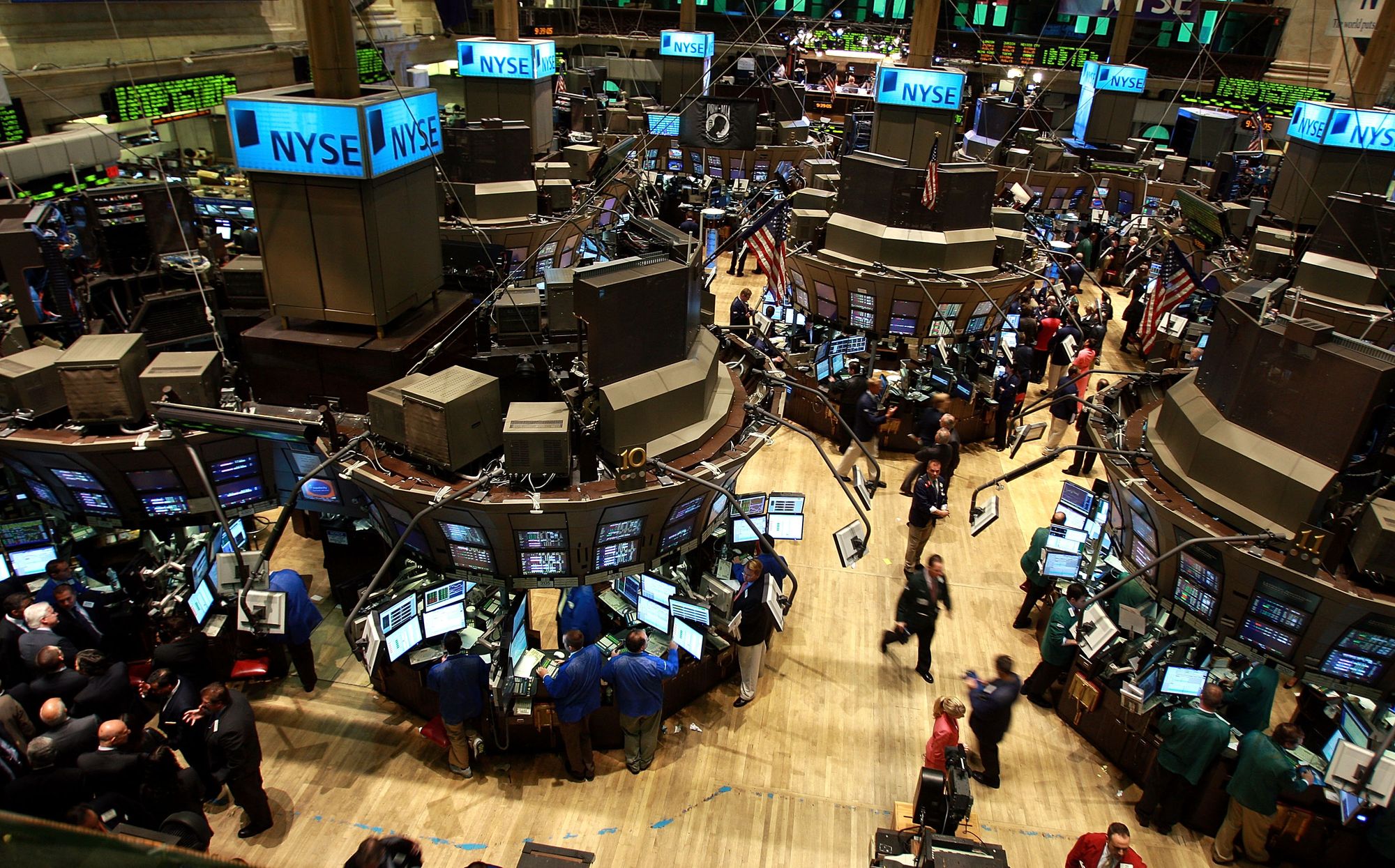I. The Market Context
The first recorded illustration of a derivative dates back to around 600 BC in ancient Greece when philosopher Thales of Miletus became the world's first (olive) oil derivatives trader. After a series of mediocre olive harvests, Thales used his knowledge of astronomy to predict a bumper season – and positioned himself to profit from the rising price of oil by negotiating what was effectively called options on olive oil for delivery in the spring. The stars aligned, and he cornered the market, making a fortune in the process.
From clay tokens representing commodities traded by the Sumerians, through the use of "fair letters" to buy and sell agricultural commodities in Medieval Europe, to the establishment of the Chicago Board of Trade (CBOT) in 1848 – one of the world's oldest futures and options exchanges, derivatives have a long and exciting history. And when it comes to modern times, derivatives have been one of the major forces driving the whole financial industry forward since the 1970s.
When it comes to the legitimacy and maturity of different financial instruments, derivatives have proven time and time again to be a crucial piece of infrastructure necessary to support the long-term growth of any asset class.
As of today, the total notional amounts outstanding for contracts in the derivatives market was an estimated $640 trillion, according to the Bank for International Settlements (BIS). It should be no surprise that derivatives are emerging in crypto markets, especially the Defi market.
In very fundamental terms, the motives for developing and using DeFi derivatives are the same as in traditional markets, either to hedge price risk associated with an exposure to a crypto asset, exploit speculative opportunities, and access leverage.
Suppose the only thing derivatives require are two or more parties transacting based on the price of an asset. In that case, DeFi has all the money legos to rebuild the derivatives market, but in a permissionless, trustless, peer-to-peer manner.
II. Traditional Finance Derivatives

In order to understand the concept of DeFi Derivatives, let's first examine the use of derivatives in traditional finance.
A derivative is a big word created by Wall Street that simply means: financial security with a value that is reliant upon or derived from an underlying asset or group of assets. In other words, it's trading a thing that represents the price movements of the underlying asset. The most common underlying assets for derivatives are stocks, bonds, commodities, currencies, interest rates, and market indexes.
Derivatives are tradeable on exchanges and OTC networks (which come with a counterparty risk). The value of financial derivatives depends on the price fluctuation of other assets. However, they do not require the issuer's consent for trading activities.
Common examples of financial derivatives are futures, forward contracts, and options. A forward contract refers to an agreement between two parties to buy or sell an asset at a certain time in the future for a specific price. Futures are traded on exchanges instead of OTC. On exchanges, prices are settled on a daily basis until the end of the contract. With options, a participant has the right, but not the obligation to buy or sell an underlying asset in the future. On many occasions, contracts change ownership or are sold before the settlement date.
The most common use of financial derivatives is to hedge against risk due to price fluctuations and other circumstances that might shift the value of an asset in the future.
Imagine a farmer that primarily focuses on growing wheat. The wheat price can fluctuate throughout the year depending on the current supply and demand. As the farmer plants wheat, they are committed to it for the entire growing season, which presents them with a considerable risk in case the price of wheat is low when the harvest time comes.
To reduce this risk, the farmer can sell short wheat futures contracts for the amount they predict to harvest. At the time of harvest, if the price of wheat is lower than initially anticipated, the short position makes a profit that offsets the loss from selling the actual grain. If the price of wheat is higher, the short position will be at a loss, but the profit from selling the wheat offsets that loss.
So, regardless of the wheat price in the future, the farmer will have a predictable income.
The other popular use case for derivatives is speculation.
In a lot of financial instruments, including derivatives, speculation can represent a significant amount of traded volume. This is because derivatives offer an easy exposure to particular assets that may be hard to access otherwise, for example, trading oil futures instead of actual barrels of oil. They can also provide easy access to leverage – a trader can purchase a call or a put option by providing only enough funds to cover the option premium and gain exposure to a significant amount of the underlying asset.
Speculators are important market participants as they provide liquidity to the market and allow people who actually need to buy a particular asset to hedge their risk and enter/exit the market easily.
III. DeFi Derivatives

Defi derivatives work the same as traditional derivatives in that buyers and sellers enter into a contract to trade an underlying asset. In this case, that contract is the smart contract.
DeFi derivatives' values are often tied to cryptocurrency markets, although, in some cases, they track the value of fiat, commodities, and other traditional assets. Like many other elements of decentralized finance, DeFi derivatives often rely on the use of smart contract technology and other technology-enabled solutions.
Using automated market makers for derivatives trading can be challenging, but several technology solutions exist to deal with this issue. For example, a virtual liquidity machine can use a smart contract to create a constant product, supplying long and short liquidity. Virtual liquidity machines mitigate liquidity provider risks by eliminating the liquidity provider role and transferring the risk to the protocol.
Back to the agricultural example, farmers in decentralized finance don't grow crops but grow "yield." And they can use Defi derivatives to offset a potential loss if the price of one of the tokens used for yield farming loses its value. This is superior since blockchain offers several benefits, including fast execution, decentralization, transparency, ownership, etc.
For a closer look at Defi derivatives, let's examine Synthetix, which (at the time of writing) is one of the largest and most significant early protocols in this category. It allows users to create synthetic assets that track the value of a range of tradeable things – fiat currencies, cryptocurrencies like BTC and ETH, and even commodities (e.g., oil, gold, and silver). Synthetix allows traders in DeFi to trade synthetics ("synths") which are overcollateralised derivatives on cryptocurrencies, fiat currencies, commodities and stock market indices like the Nikkei 225 Index. Synthetix allows users to create synthetic tokens that track the price of underlying assets using smart contracts and Chainlink oracles. The synthetic tokens provide exposure to the underlying assets without having to buy them directly.
UMA is an alternative DeFi Derivatives protocol that does not rely on over-collateralization like the 5:1 collateral ratio on Synthetix. It relies on liquidators by rewarding them to liquidate improperly collateralized positions. These liquidators use their own price feeds and therefore do not rely on oracles. They pay back the debt and reclaim the collateral. The role of disputers is to identify which liquidations are valid. In case of a dispute, UMA holders have a monetary incentive to vote on the price of the asset, according to their own price feeds.
IV. Bottom Line
Every growing market naturally develops its own derivatives market. The Derivatives Market is a crucial piece of infrastructure necessary to support the long-term growth of any asset class. The growth of the derivatives market also shows the sight of legitimacy and maturity of an asset class.
Derivatives were already a gamechanger in the finance world, so bringing these powerful financial instruments to a permissionless, open finance system has incredible potential.
Ideal for risk-averse and risk-loving investors, derivatives are a powerful tool to hedge or speculate.
With the continued growth and evolution of the DeFi space, it will be interesting to see how the market share of decentralized derivatives changes over time, what new instruments are created, and which underlying assets generate the most demand. The cryptocurrency derivatives market has the potential to have trading volume in the trillions - so while there are new and innovative protocols coming out all the time, we are still very early.
With decentralized derivatives, anyone with a smartphone and internet can access these markets. These bleeding-edge protocols are unlocking yet another class of financial products to the masses and reimagining an ancient financial instrument for a more equitable, decentralized financial system.
